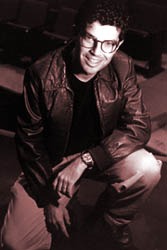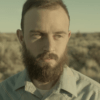
Flaherty Film Seminar Moves On
Written by Gina Harris | Posted by: Anonymous
In 1954, Dummerston, VT, was the setting for an informal gathering of filmmakers and students. The "Flaherty Experience" was established by the wife of mining engineer, explorer, and writer Robert Flaherty as a way to keep his vision alive. Today, the gathering is a unique forum that encourages exploration through dialogue and introspection by participants into the art of documentary filmmaking.
"Frances [Flaherty’s wife] understood that Bob was an intensely visual person. [He] knew that the camera has a different way of seeing," said Barbara van Dyke, founder of the Stowe Film Society in Vermont. Flaherty saw that a film is not in its script, but "in the magic shelves on the silver screen."
The most famous tale of Flaherty’s "seeing" occurred while filming "Louisiana Story." On the way to the day’s shoot, the crew passed a spectacular spider web. Flaherty insisted they stop and film it. It became the opening shot in the 1948 documentary.
"Bob’s compulsive looking at film [was a way] to see what the camera had found. He had the discipline to know if he saw a waterlily, to shoot it," van Dyke said.
An annual week-long retreat recreates that first gathering by bringing together filmmakers, scholars, and students who survey films in an intimate setting. The 45th Robert Flaherty Film Seminar will be held at Duke University in Durham, NC, June 4-10. This year’s program, "Outtakes Are History," salutes the filmmaker as editor and historian. They have also planned a tribute to Henry Hampton–the visionary filmmaker and founder of Blackside Productions in Boston–who died last year. Hampton’s Emmy Award-winning and Oscar-nominated documentary of the history of the civil rights movement, "Eyes on the Prize," set high standards for ensuring historical accuracy by using journalistic standards of giving equal weight to differing points of view.
Boston-based Bagwell and Richard Herskowitz, director of the Virginia Film Commission, will lead this year’s nonfiction film, video, and new media exploration. The emphasis will be on the work of filmmakers who use the editing process to make the viewer conscious of the selection and displacement of alternative meanings and histories.
"We form the raw material [from which] film studies are created. On a dynamic level, we are about the study and thinking of film," said L. Somi Roy, executive director of International Film Seminar, which sponsors the event.
Flaherty was the first to make films that documented the traditional lives of real people. This forum is one of the few places where people gather to discuss and think about the art of nonfiction film. The first-time collaboration with Duke University is the result of expanded programs; namely, a three-day Flaherty-on-the-road workshop that appeared in 1997. The university had hoped to host a mini-seminar, but Roy saw the opportunity to take the entire week-long event to a new region.
"We are trying to see how we can re-position the longstanding tradition in New York where it has been an annual summer event, how to bring it to new audiences," Roy said. He plans to collaborate in other regions, as well as develop international partners. He insists, however, that the organization will retain its New York base and New England flavor.
The anticipated attendees reads like a "Who’s Who of Documentary." Among them, Richard "Ricky" Leacock, a Flaherty disciple and friend, is expected. He attended school with Flaherty’s daughters and subsequently made his own prodigious shorts while still in school. Leacock showed up at Flaherty’s door one day and eventually accompanied him south to make "Louisiana Story."
"Nanook of the North" and "Louisiana Story" stand not only as the bookends of the filmmaker’s life, as his first and last films, but also as a discourse of how far the filmmaker had traveled in his ability to capture, on film, the conflict between a vanishing age-old world and the emerging industrial one. The former, about the Itivimuit tribe of Eskimos, was released in 1922 to critical acclaim and enjoyed enormous worldwide popularity, and is probably the longest running commercially released film. The latter to some degree reconciled Flaherty’s inner turmoil about the development of the remaining natural world and what that process did to preindustrial peoples–a conflict that had always deeply affected the filmmaker.
"All art," wrote Robert Flaherty, "is a kind of exploring. To discover and reveal is the way every artist sets about his business." His ability to capture the essence of a people’s way of life has been called "mystical." "Bob worked intuitively," said van Dyke. "He had an amazing capacity to see."
"That [which] we call the ‘Flaherty experience’ happens to happen to participants viewing innovation and artistry in film so that you begin to see how you look at films, and how others look at film. This happens over time, after a deep immersion [in film]," said Roy.
Following the retreat, the Museum of Modern Art (MOMA) in New York presents a selected program based on films from seminar. From June 11-13, MOMA will show five films that celebrate the spirit of the "Flaherty experience."
"It’s not clear like a festival. [The director] is not up there in the spotlight…[B]oundaries between the artist and viewer is erased," said Roy.
Participants will possibly see a little bit more experiential work and unfinished work. Roy sees the division between experiential and documentary as not clear. "The line is blurring. Editing is a way of shifting meaning and history. [That is] a live-wire issue: everyone’s recreating in one way or another. You are intervening in some way. It’s a shifting line. [We’re] asking the same questions, then actually find an answer," he said.
This year the seminar will be online, and daily updates will be managed by indieWIRE. The new media portion of the seminar, is "quite special," according to Roy. An onsite web project will be provided by Philip Mallory Jones.
"Online people chat after it happens. indieWIRE redefines this horizontal line as an alternative outside the studio system. Indie-web does connect to everyone, and offers another way of sharing online discussion," said Roy.
Planning for next year’s seminar is already under way, and the end-of-the-millennium program is fittingly about moving pictures. "What happened when we took away from the audience the notion that this shot is this [many] frames long?" Roy asked.
The seminar will center on photography–the still image versus the moving image. "The control of time has come back to the viewer" with the invention of digital media and its emerging use on the Internet. One imagines this is what Flaherty would have wanted.
For more information, visit http://www.flahertyseminar.org/









